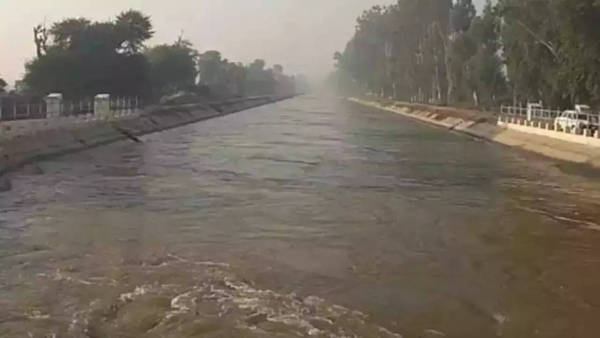
Travel News Desk,Today we will know about the life-giving Indira Gandhi Canal of Rajasthan, which is the longest man-made canal in the world, that life-giving canal of Rajasthan which made the barren desert green, that area of Rajasthan where there were miles of barren land and sand. About Indira Gandhi Canal transforming lush green fields into barns. When was the Indira Gandhi Canal built, how was it built in such an inaccessible desert and deadly heat, who built it, the story of its 949 kilometer long journey, the story of the Kaya Kalpa of Rajasthan, the story of the cities settled around this canal. So let us know the story of Indira Gandhi Canal, the lifeblood of Rajasthan. Thar desert located in Rajasthan is the 17th largest desert in the world and the 9th largest hot desert in the world. When India and Pakistan were divided, the desert was also divided between the two countries, in which Pakistan got 15% of this desert, while India got 85% of it. The vast Thar desert, where nothing is visible except sandy shores for miles, was a part of Rajasthan where almost all of it remained barren and dry. Here people had to walk several miles to get drinking water. Finding water here in Rajasthan was like fighting a war.
In the year 1899, there was a severe famine in North India, Rajasthan was badly hit by this severe famine. Due to which Jaipur, Jodhpur, Nagaur, Churu and Bikaner areas of Rajasthan were severely affected by drought. Due to this famine occurring in Vikram Samvat 1956, it is also called 'Chhappaniya famine' in the local language. This famine was recorded in the British Gazetteer as 'The Great Indian Famine 1899'. Taking lessons from the devastation of the famine, kings, emperors and administrators started planning measures to deal with such famines in the future. Maharaja Ganga Singh of Bikaner was at the forefront of planning to deal with the famine and began considering a plan to bring water to Rajasthan through a canal. And this responsibility went to Kanwar Sen. The Maharaja wanted that after talks with Punjab, a canal could be constructed from the Sutlej River to Bikaner in Rajasthan, so that the people of Bikaner could get relief from the water problem. This canal came to be known as Ganga Canal and due to this canal, Rajasthan got the city Ganganagar which is called its food bowl.
The Ganga Canal had provided relief from the water problem in Bikaner but Maharaja Ganga Singh and Kanwar Sen wanted to relieve the entire Rajasthan from the water problem. To realize this dream, Maharaj Ganga Singh ji prepared a draft of a canal to bring water from Punjab to Rajasthan and presented it to the British government of that time. But in the year 1947, Maharaj Ganga Singh died due to cancer, after which his son Sadhul Singh became the new king of Bikaner. But with the independence of the country in 1947, the monarchy also ended, due to which this draft went into abeyance. After this, in the year 1948, Kanwar Sen once again presented the plan of this canal before the government to provide irrigation facility in an area of twenty thousand square kilometers, which was approved after a long discussion and on 31 March 1958, it was approved by the Union Home Minister. Govind Vallabh Pant laid its foundation stone and named it Rajasthan Canal. Along with this, Punjab had also agreed to provide water to Rajasthan like a good neighbour. For the water of this canal, it was decided to build Harike Barrage at the confluence of Sutlej and Beas rivers near Firazpur in Punjab. But even after approval and arrangement of water, the construction of this canal was not an easy task.
In the Thar Desert, making a canal by removing the soil from hundreds of kilometers of sandy banks and leveling them was a very difficult task in itself. The terrible heat and storms of the desert had made it almost impossible for the engineers and laborers to work here, apart from this, many laborers and engineers had died due to the terrible heat and terrible cold in winter. At that time there were neither modern machines nor sufficient resources. But while preparing the draft of the canal, Kanwar Singh had also kept in mind the environment here, that is why to deal with it, Kanwar Singh and his team used camels, called ships of the desert, to dig the land. When the work of digging the land was started with camels, the donkey, which is considered to be the most hardworking animal, also performed the work of carrying the goods very well. By working together on a war footing, camels and donkeys made the impossible task of digging and transporting soil possible. Had these animals not been there, it would have been impossible to build this canal. Countless animals lost their lives in building this canal but the work was not stopped.